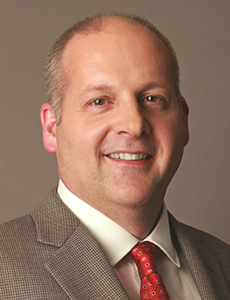Smart Coverage, Faster Payouts: Inside the Growing Appeal of Parametric Insurance

Everyone seems to be parametric insurance-curious these days.
The modern parametric insurance policy structure, which pays out if a particular event occurs, has only been around for a few decades, but it has found wide acceptance from carriers, brokers and insureds based on its certainty and flexibility.
James Doona, senior vice president with Munich Re Capital Partners, said his team fields more than a thousand requests a year for parametric policies. His group handles non-standard risk transfer, including parametrics, CAT bonds and sidecars. Retail brokerage Risk Strategies said it’s most frequently contacted about parametric cover in wind and wildfire.
“We always ask, can we write the risk,” Doona said, “and will it do what the client needs done?”
“We have ongoing markets for flood, earthquake and hail. We do a lot of quoting and a lot of explaining,” added Carl Smith, national property practice leader, Risk Strategies. “For certain clients and exposures it makes sense. For others, not. We are not binding as much parametric cover as we are traditional insurance.”
The hardening of traditional markets is driving growth in parametrics. “Buyers are suffering from rate fatigue,” Smith said. “Year after year, they get less coverage for higher rates with greater retentions. Parametric coverage unlocks additional capacity through different mechanisms. The only limitation is what you can get underwritten.” That said, modeling and pricing often remain challenging, and the manuscript nature of policy language can complicate distribution.
The Birth of Parametric Cover
Doona noted parametric coverage dates back at least to loss-of-use coverage in Hamburg, Germany in the early 1800s. “In the modern era, the series of major events in the late ‘80s and early ‘90s — Hurricanes Hugo and Andrew, and the Northridge Earthquake, for example — were an alarm to the insurance world that such incidents could consume a significant portion of global capacity. During the ‘90s, there was a push to find mechanisms to introduce new capital. That was the origin of CAT bonds.”
Those efforts reduced systematic risk and brought in non-correlated capital. “They increased the Sharpe ratio for insurers,” Doona said. Institutional investors and private equity became comfortable providing capital based on parametric triggers, he added.
While the initial impetus was top-down for capital, the utility of parametrics quickly became apparent bottom-up to enable new approaches coverage. Both carriers and owners also like the rapidity of payment, in marked contrast to conventional claims through adjustment.
“The basic insurance principle that there should be no betterment, that clients should simply be made whole or nearly whole, still applies to parametric policies,” Doona said. “Payment takes days, rather than weeks or months, so the money can flow more quickly and insureds can take action. Often timely remedies can save money for carriers and clients.” There are clawback provisions for payments after parametric triggers, but they are rarely used. Carriers also like the loss-control aspect: The payout is essentially known, which helps control loss creep, Doona added. “If you can model it, you can price it.”
Using Parametrics to Fill Gaps
into pricing, consumer education, technology needs for peril modeling, frequency, and portfolio management,” said Michael Marks, assistant vice president of emerging markets for Nationwide Excess and Surplus Specialty.
Among other coverage, Nationwide writes Florida property and personal lines and is adding parametric coverage. That is not competing with existing polices, Marks stressed, “it is filling gaps. We’re focused on areas of need, notably downtime in cyber, power, and weather. Anything that is difficult to measure in the traditional loss sense. There are huge markets where owners want coverage.”
One of the most important segments is “government entities looking for backstops as the admitted market starts to run from exposures, especially wildfire,” Marks said. Parametric offerings can also be a differentiator, such as adding an evacuation trigger to traditional coverage.
There has not been any difficulty in securing reinsurance for parametric policies, Marks said. “We have not experienced any. We have found that insurance-linked securities markets are very interested in this space and putting capital behind it due to the nature of no-tail business within parametric offerings. The hard part is establishing the distribution ecosystem.”
Modeling Improves
Jean-Christophe Garaix, head of agriculture and parametrics at Liberty Mutual Reinsurance, started 25 years ago working with utilities on weather derivatives to mitigate their risk of extreme temperatures. “There was not enough capacity for all the exposure,” he explained, “so banks started to get involved. But there were no assets to trade or hedge. That is where insurance entered because we are risk takers. The first agricultural parametric contract was in 2002, in Canada, then in Mexico the next year.”
In those days underwriters and actuaries were working from Excel spreadsheets, and the challenge was to find data. “Now we are working with gigabits of numbers and the question is which data are we using,” said Garaix. “It used to be about filling holes, now we’re starting to understand trends, especially regionally and locally.”
In their initial work banks were applying Black-Sholes to calculate pricing. “They were not looking at trends,” Garaix noted, “that is a major change from today.”
Technology is another major change. Liberty Mutual Reinsurance makes extensive use of earthquake sensors in its parametric coverage, including one with the University of California, in partnership with Safehub, a technology provider in seismic sensor and risk management. “The insureds need to determine within a few minutes of an event if a building is safe to reoccupy. That is part of crisis management,” Garaix said.
With volume and accuracy of data a resource rather than a concern, carriers are bringing that to bear on two endemic property exposures that are increasing in severity and frequency because of climate change: flooding and wildfire.
“We are one of the largest wildfire parametric carriers in the world,” said Garaix. “We were mostly in timber, but we are expanding into property. There are lots of ideas coming in from brokers and clients, such as smoke taint. Now we can measure that.”
Government Growth
From a broad risk management perspective, some organizations include weather derivatives and other financial contracts within parametrics.
Within the Gallagher Group, Gallagher Re focuses on reinsurance and has been involved in parametrics since it acquired Willis Re three years ago. Public sector transactions have been the core business, including the reinsurance placements for the regional risk pools in the Caribbean, Africa, and Southeast Asia.
“We focus on collaborating with severe convective storm modelers to set a basis for novel private sector parametric transactions,” said Gian Semadeni, parametrics lead at Gallagher Re, “our top products are related to peak perils such as earthquake and tropical cyclones, and are increasing our development in complex perils including severe convective storm, drought, and flood.”
Agriculture has been a big part of the market growth for parametric coverage, said Kavit Khagram, parametric and climate risk broker at Gallagher Re, noting that “government schemes and pools are a big part of the ag sector demand. If governments decide to increase or decrease the subsidies, that will affect growth.” &










